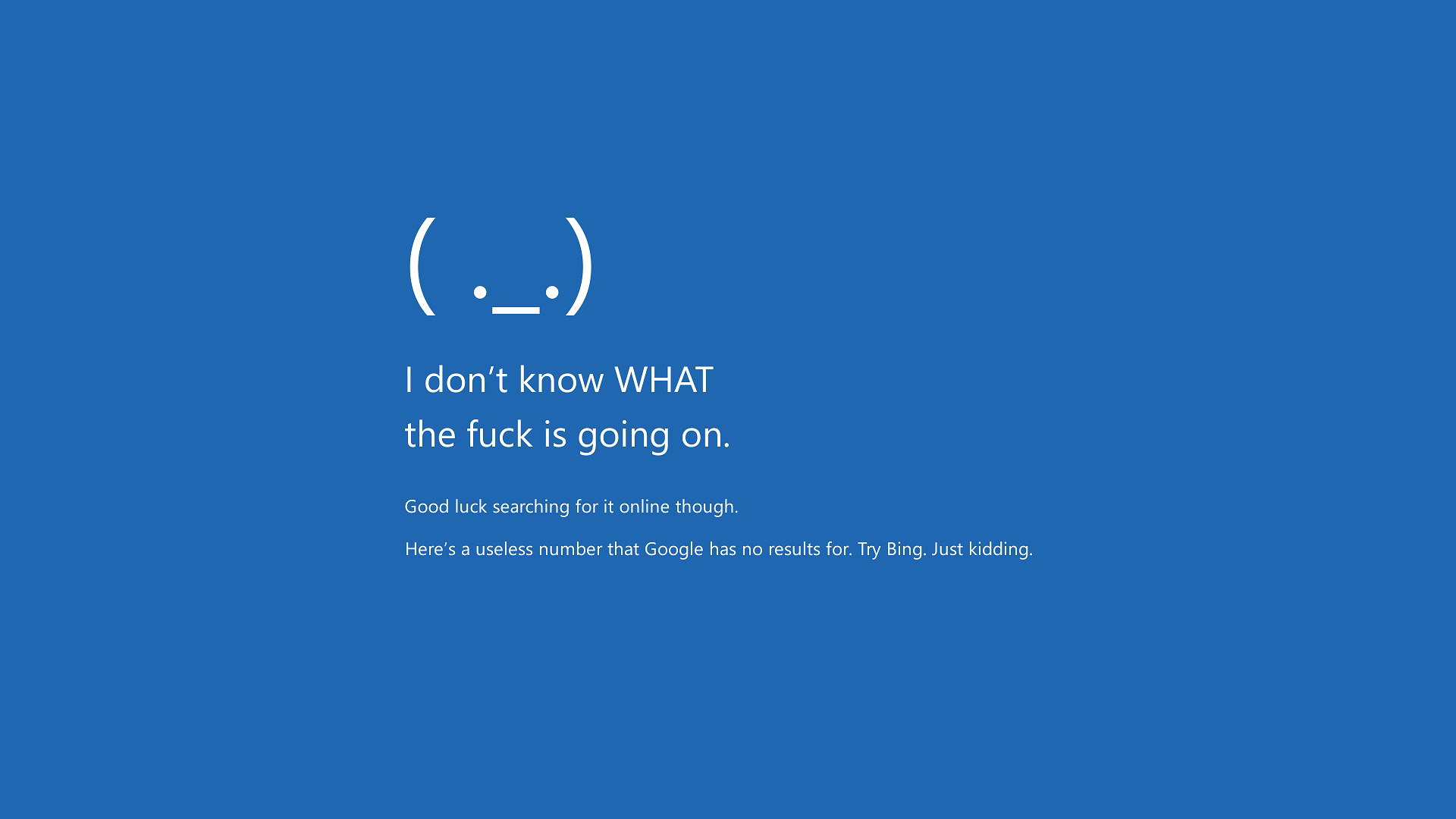
No one tell them that they can monopolize solar panels.

No one tell them that they can monopolize solar panels.


Meanwhile Nim:
echo "I am still worthy"
let a = r"I hate the ugly '\' at the end of " &
"multiline statements"
for x in 0..9:
if x == 6: echo x
echo x # this is error in Nim, but not in python. Insane!
assert false + 1 # this is an error (python devs in shambles)
assert true - 1 # see above
Thanks for coming to my Ted-talk.
More here: Nim for Python Programmers
Ubuntu: 😮why?
For a lot of people Ubuntu is the linux. Canonical is just good at marketing. For all it worth, Ubuntu is not the bad choice for average user who’s not into ricing and not bothered by bloat.
Manjaro: haven’t you managed to kill it yet?
I’ve been using Arch and Manjaro for couple years each and in my experience they both break regularly. But, for some weird reason, Arch Linux is praised, when Manjaro is shamed upon.
Mint: ex windows guy?
Aren’t we all?
The most stable rolling distro.


Half of the linux ecosystem is personal projects.
Linux itself started as
just a hobby, won’t be big and professional like gnu
It’s not useless as you can learn from it.


Almost. It doesn’t try to solve all the problems, though. I’d say it’s a passion project like Haiku and TempleOS.


From interview: it started as a research project. The author wanted a distribution that uses the least system resources with maximum performance.
He started with archlinux, moved on to gentoo and to go even deeper - found the infamous “linux from scratch” and started to shape his own distro.


Ok, because of this post - I decided to bite the bullet and try wayland again. And it was much better experience this time:
I’ve installed sway “pattern” on OpenSuse-Tumbleweed and:
waybar absolutely supports clicking tray icons.
I confused it with swaybar, that’s installed with sway by default and should be an i3bar-compatible. Waybar doesn’t seem to support i3bar protocol, but anyway, after I configured it - it’s like 95% there from what I want.


I could switch tomorrow if I could do my current setup:
Last time I tried Wayland in December, I had issues with waybar not supporting clicking tray applet icons. Also I’ve ported my dropdown terminals script to support sway - and it worked half the time, like, literally every second key press was ignored.
On one hand I have X session that currently has no downsides for me, on other - wayland that has no upsides. Tell me, why would I switch?


If it was near the shore - they might’ve stole the section of wire. Copper is really expensive.
Sorry, I meant to write that Github is not a software distribution, but a code distribution platform.
And ‘mostly harmless’ as in it’s not inherently malicious - you can use it for harmless stuff. It’s merely a tool.
Github is not a software distribution platform, it was never meant to be one. It’s a developer platform for code distribution and collaboration. And UI is designed around that.
A lot of projects use it as a distribution platform, but they’re wrong - it’s always better to have a web page with simple download button for casual “ordinary” people.
But, this case is special: this mostly harmless tool is designed and almost exclusively used to stalk / doxx / hack people =|. So, it’s not in developers interest to make it widely available and easy to install.
Yes the compiler/interpreter can figure it out on the fly, that’s what we mean by untyped languages.
Are there untyped languages? You probably meant ‘dynamically typed languages’.
But even statically typed languages can figure out most types for you from the context - it’s called ‘type inference’.


For one - the error handling. Every codebase is filled with messy, hard to type:
if err != nil {
...
}
And it doesn’t even give you a stack trace to debug the problem when an error happens, apparently.
Second reason - it lacks many features that are generally available in most other languages. Generics is the big one, but thankfully they added them in last half a year or so. In general Golang’s design principle is to implement only the required minimum.
And probably most important - Go is owned by Google, aka the “all seeing eye of Sauron”. There was recently a big controversy with them proposing adding an on-by-default telemetry to the compiler. And with the recent trend of enshittification, I wouldn’t trust google or any other mega-corporation.
I have all apps I use daily in the appimage format. Yesterday I decided to try btrfs for my root partition and did my annual Linux reinstall. All my apps were already there and ready for work from the start.
I also have a usb flashdrive always on me with the same appimages. Just in case I’d wipe a hard drive by accident and wouldn’t have an internet connection or something like that (in case of emergencies). You can’t do this with flatpaks or snaps.


IMO, go’s gopher is ugly, not cute. But, anyway, there are better reasons not to learn Go.


1 - bloat
2 - click-bait title
Just tell me actual errors like a professional OS would.
Professional OS:

Flatpaks and Snaps become more efficient in terms of storage usage the more you use them…
I’m not disagreeing with that, but how many apps an average user requires that he can’t find in the distro’s repository? And how many snaps he should have installed, so it’d be more space-efficient than appimages, 10? 20? 30?
hint: for me - one is too many.
Flatpak and Snap share dependencies while Appimage doublicates all of them…
On the other hand, appimage only includes the libraries actually required by an app. Where Snap/Flatpack install big fat runtimes.
I’ve recently made a very simple gtk4 app and packaged it with all dependencies into a 10mb appimage you can just download and run. The very same app would rely on 250+ mb gtk4 runtime with snap.
And I could be fine with that; but no, it’s not that simple, you’ll have x3 gtk4 runtimes on your system. Because snap keeps 3 last versions of every snap pkg and it’s dependencies. I don’t know what flatpack installs, but it’s not efficient in that regard either.
2-3 gigs of libraries a program might not even need. It’s just wasted space for an average linux user. And if I was fine with that, I would be using Windows right now.
I believe for many companies, developers work on giant codebases with many hundred thousands or even millions of lines of code.
With such large codebase you have no control over any system. Because control is split between groups of devs.
If you want to refactor a single subsystem it would take coordination of all groups working on that part and will halt development, probably for months. But first you have to convince all the management people, that refactor is needed, that on itself could take eternity.
So instead you patch it on your end and call it a day.